- House mouse
- Mouse species
- House Mouse Life
- Rodent feeding and breeding
- Harm from mice
The house mouse is a special type of rodent that is known for its close coexistence with humans. A small gray animal can be found in the garden, summer cottage, in the garden, outbuildings, sheds, chicken coops, even in your own house, apartment. An annoying creature eats food supplies, spoils interior items, nibbles wiring, makes many other dirty tricks to humans.
Distinctive appearance
House mice belong to one of the most numerous groups of mammals on earth - rodents. About 80 are known in the world. mouse species. The most common are house mice. Outwardly, the animal is familiar to adults and small children. A photo of house mice is located below.
- The body length of an adult is from 6 to 10 cm. In some cases it can reach 15 cm. How much a house mouse weighs depends on the conditions of existence and nutrition. The weight of a wild mouse is from 12 to 30 g. Sexual dimorphism is weak. In size, it is difficult to distinguish between a male and a female.
- The tail is thin, with horny scales. The length of the tail is 60% of the length of the body.
- Rounded small ears are widely spaced relative to each other.
- Round eyes, oblong muzzle.
- House mice are characterized by different colors. The upper torso is dark. It happens gray, brown, black. The abdomen is always a tone lighter. Ash gray, white, red hairs are present.
Interesting!
House mice live quietly in cages. Breeders brought decorative animals in yellow, blue, black, red, white. Below is a decorative house mouse in the photo.

Varieties
Brownies mice live everywhere. Contributes to this high adaptive ability. Animals relatively well tolerate cold, heat, adapt to any conditions of existence. Provides survivability immediate proximity to humans - a minimum of enemies, a large amount of food. A typical representative of the mouse can be found on the street, indoors. It lives in garages.
House mice are the most common experimental specimens in laboratories. Over the many years of work, breeders intentionally or unintentionally bred many different subspecies of house mice. But several are officially allocated.
House Mouse Classification:
- musculus - gained distribution in Poland, Northern, Eastern Europe, part of Russia;
- bactrianus - an interesting species of domestic mice is found in Asia;
- domesticus - a thermophilic species found in southern Europe, America, Africa, Australia;
- castaneus is another representative of Asia, only its southeastern part.
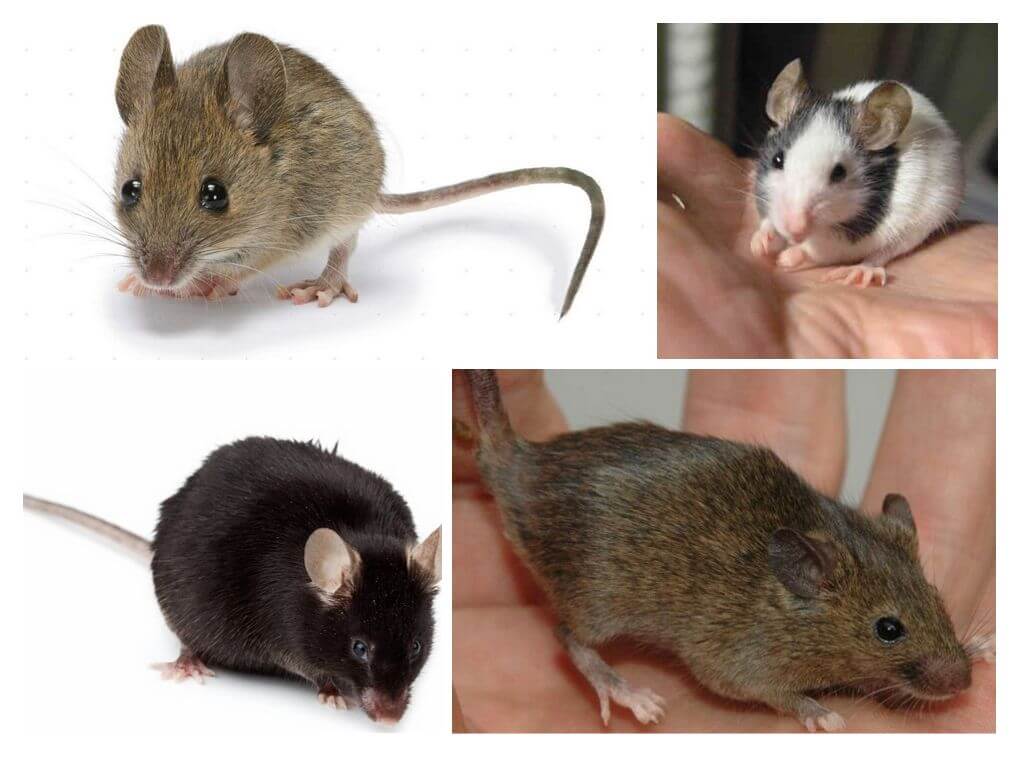
For a long time there was another species of domestic mice - M.m.molossinus. Rodents have spread in Japan. However, later scientists said that this species can not be classified as a separate type, since they received animals by crossing M.m.musculus, M.m.castaneus.
Wildlife Environment
The house mouse loves heat, does not tolerate high humidity. Animals do not live in the Far North, the expanses of Antarctica, high in the mountains.The rest of the terrain was explored up and down.
The house mouse loves to settle near people's houses in the warm season. With the onset of cold weather, barns, warehouses, granaries, outbuildings completely move to the man’s abode. Seasonal migration is 3-5 km.
Mass migration is observed under adverse climatic conditions. Contributes to the process of migration fire, flood, drought, premature freezing. Some of the house mice are left to winter in the fields in haystacks, forest belts, and ricks. With the onset of spring leaves homes, apartments, moves to natural places of residence.
On a note!
In a desert area, where the air temperature is always comfortable for house mice, mass migration to human homes does not occur. Rodents live year-round in oases, keep places with the presence of ponds. In the rocky terrain, they live in walnut orchards, causing considerable damage to the owners.
Shelter housing
The house mouse in most cases settles on soft, not prone to drying out soil. To make it convenient to make moves, the walls of the tunnels did not collapse. A hole is constructed with a length of 100 cm. There must be an entrance, 2 emergency exits. He builds a camera for the nest at a distance of 30 cm from the surface of the earth. In winter, deepen more - up to 65 cm in depth. The diameter of the nest is about 25 cm. House mice prepare a soft litter from twigs, leaves, moss, and all convenient materials.
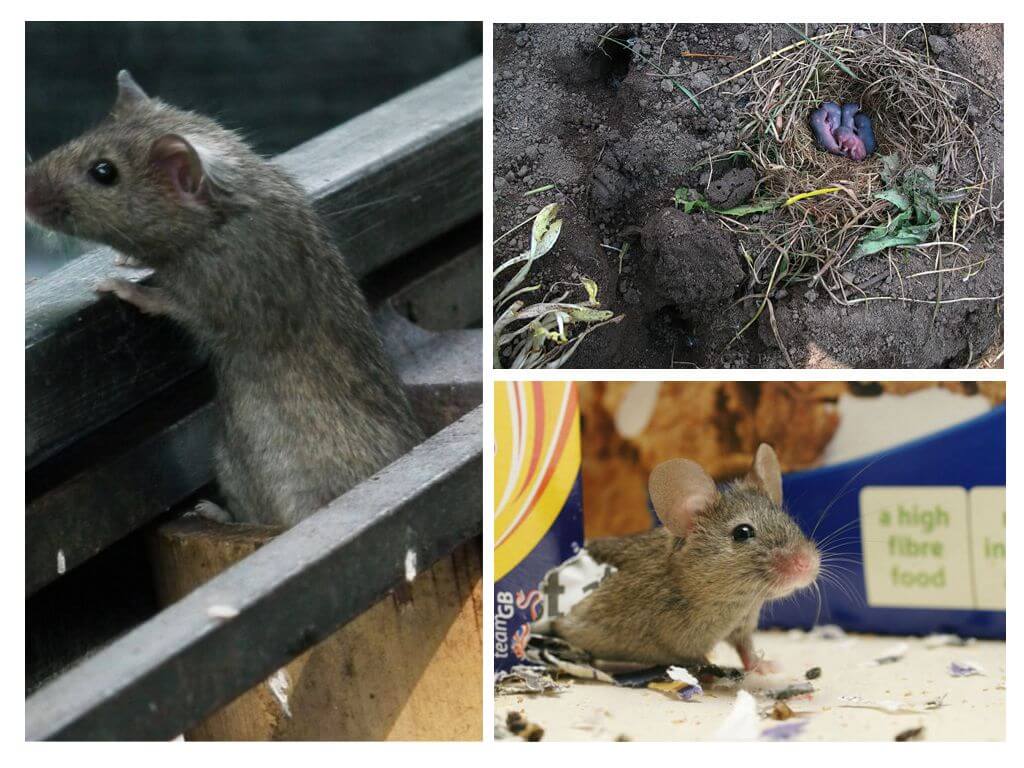
Often house mice populate already-prepared burrows of voles, moles, hamsters, and other rodents. Or they build a nest under the stones, in natural land depressions, under a mound of leaves.
In human housing, house mice place their nests in well-protected, secluded places. Prefer to settle:
- under the floor;
- between the walls;
- in the attic;
- under trash cans;
- in places of accumulation of food waste;
- in the vegetable store.
For the construction of the nest, various available, suitable materials are used: straw, pieces of fabric, twigs, hair, feathers, polystyrene, polyurethane foam.
Interesting!
In the nest, a brownie mouse always tries to maintain cleanliness. If parasites are started, housing is wet, it just became uncomfortable, they are thrown without remorse, they are building a new nest.
Lifestyle
In the wild, the house mice activate their activity in the dark. During the day they hide in holes for several reasons - they do not like bright light, they are afraid of predators. In a person’s housing, they adapt to the way people live. Crawl out of the shelter with complete silence.
If there is constantly artificial lighting in the house, house mice become active around the clock with regular breaks. About 20 periods of wakefulness with an average duration of 30 minutes occur per day. House mice move along the studied routes. Leaves feces, urine, food crumbs.
House mice run well, quickly respond to rustling, movement. The animals are capable of speeds up to 13 km / h. Climb trees, flat surfaces, jump, freely behave in the water.
Each has its own territory. The mouse does not go far from the nest; it hunts in the designated area. The male is supposed to have 1200 m², the female - 900 m². During the period of strong breeding, house mice live in families, colonies. There is a leader - a male, several dominant females.
Interesting!
The head of the family behaves aggressively towards young males, skirmishes between championships rarely occur between females. They jointly raise offspring, take care of good nutrition. Weak individuals try not to show themselves to the leader, begin to become active when the "leader" falls asleep. The grown mice are soon expelled from the family. They create their own hierarchy.
Power Features
The traces left on plastic, rubber, wood and other inedible materials give the impression that house mice are omnivores. In nature, the rodent is content with seeds. Mice prefer food cereals, cereals, legumes. It eats seeds of cultivated plants, wild.
A certain part of the diet is occupied by insects, worms, caterpillars, larvae, carrion. With a lack of water, house mice eat up the juicy parts of the plant. A rodent needs about 3 ml of fluid per day. If this rule is not observed, the animal dies from dehydration in 15 days. With an excess of food, rodents make food reserves for a rainy day. Occasionally devastating nests of birds, feast on eggs, small chicks.
In the human house, the diet of mice is expanding significantly. Pests eat all food supplies, any products. As well as soap, candles, potted flowers, glue.
Important!
The structure of mice has its own characteristics. The teeth of rodents have unusual properties. Each jaw has incisors that grow daily throughout life. The animals are forced to grind them constantly, otherwise they will not be able to close their mouths. To this end, they bite hard inedible materials - wood, plastic, polystyrene, brick, rubber and the like.
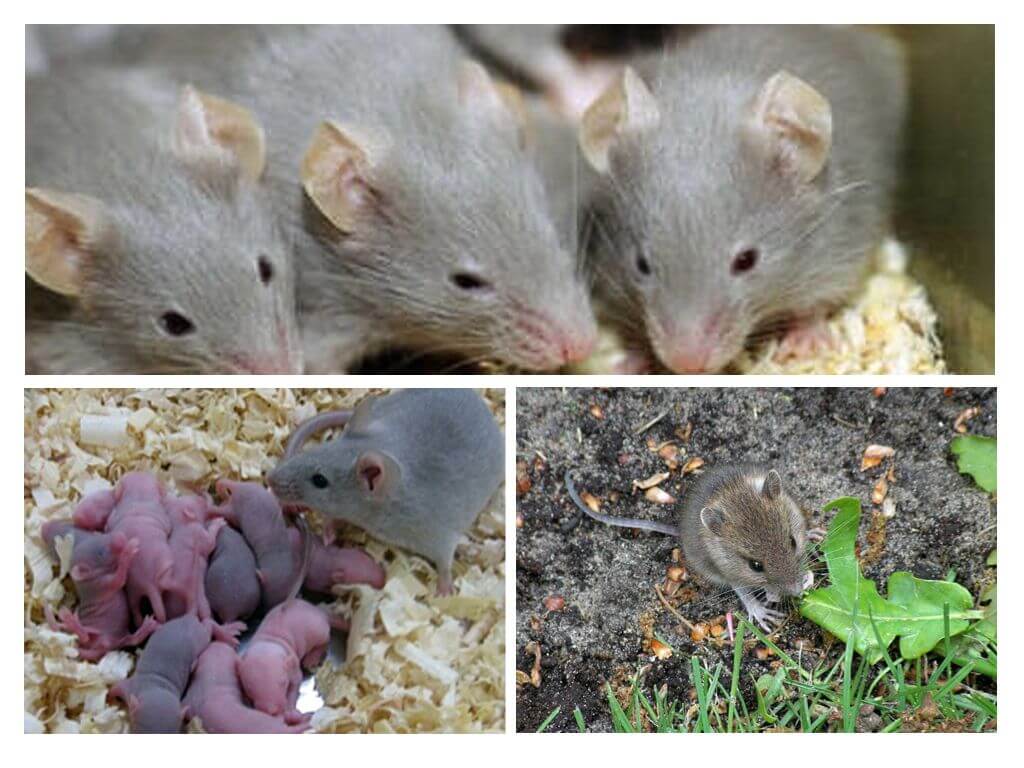
Propagation Features
House mice are extremely fertile. Under favorable conditions, the house multiplies all year round. In the natural environment the period lasts the entire period of warm days. It starts in March and ends in November. Over a year, the female gives birth to 10-14 fruits, in a litter from 3 to 11 mice. After 18 hours, ready for fertilization again. Pregnancy lasts an average of 21 days.
Mice are born blind, naked, completely helpless. After 2 weeks, they are covered with fur, open their eyes, at the same time, the teeth of the incisors appear. On the 21st day of their existence, they are completely ready for independent life, they are expelled from the nest. Fertilization of a young female occurs at 5 weeks of age.
Interesting!
Males attract the attention of females with ultrasound. Do not stand on ceremony in courtship games, immediately get down to business. House mice interbreed with other subspecies without problems.
Life span
Mice have many natural enemies - from a harmless hedgehog to a fox, a wolf, a dog, a cat. Mouse life span does not exceed 18 months. In captivity, with full care, an abundance of food, house mice live up to 3 years. In the laboratory during the experiment, the individual lived for 5 years.
On a note!
Man not only prolongs the life of rodents, but also shortens it. Applying traps electric mousetraps, cell traps, poison for mice and other methods of struggle.
The number of rodents is subject to seasonal fluctuations. It has also been observed that the mouse population increases every 5 years. At the end of winter, the number of animals is in the minimum range, with the onset of spring, rodents begin to mate. At the time of plant growth, the number of rodents increases. Until the end of summer there is a decline. The maximum number of pests is observed in the fall. At home, significant changes in the number of mice do not occur, the population is able to increase 3 times.
Harm

House mice with their huge numbers spoil the grain fields. Not so much gnawing grain as they dig tunnels, form embankments. The stalk falls to the ground, the grain is damaged, difficulties arise during the harvest.
The main harm from a house pest consists in spoiling food supplies, animal feed. Pests pollute them with feces, urine, leave a lot of bacteria, pathogens.
Undoubtedly harm furniture, decor, books, clothes. They gnaw wood, plastic, rubber, electrical wiring. For these reasons, a primitive man tamed a cat that successfully destroys rodents.
House mice are carriers of dangerous diseases:
- intestinal infections;
- plague
- pseudotuberculosis;
- fever
- rabies;
- tularemia;
- leptospirosis.
Recently, scientists have announced the possibility of transmission of breast cancer by the mouse. Diseases spread through feces, urine, saliva, ectoparasites, bites.A person is simply obliged to fight pests on the territory of the site, his own home.
Benefit
For many years, domestic mice are bred as domestic, laboratory specimens. One of the reasons for the mass breeding of rodents in captivity are various experiments. The decoding of the genome of house mice was completed in 2002. Scientists have found that the gene coincides with the human 80%. The animals check the effect of new drugs.
Breeders are constantly experimenting, breeding pets with the original color - red, yellow, blue, white, spotted. Cute little creature pleases the eyes of the owners, does not look like a harmful, dangerous gray creature.
Interesting!
In the course of numerous experiments, they received a "dancing mouse." Pathology in the work of the brain, a violation of the motor apparatus led to the fact that the animals spin non-stop, being in one place, move in zigzags. About 350 years ago, singing mice were bred in China. Rodents make sounds like crickets.
Animals are bred specifically in nurseries for feeding to other animals - snakes, lizards, hedgehogs, cats, and other predators.
The house mouse is one of the most unique, interesting, unusual creatures. Purposefully destroying the animals is not worth it, unless they were near the house, did not settle in the apartment.
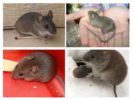
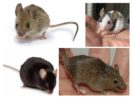
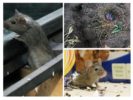
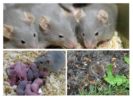
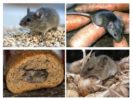
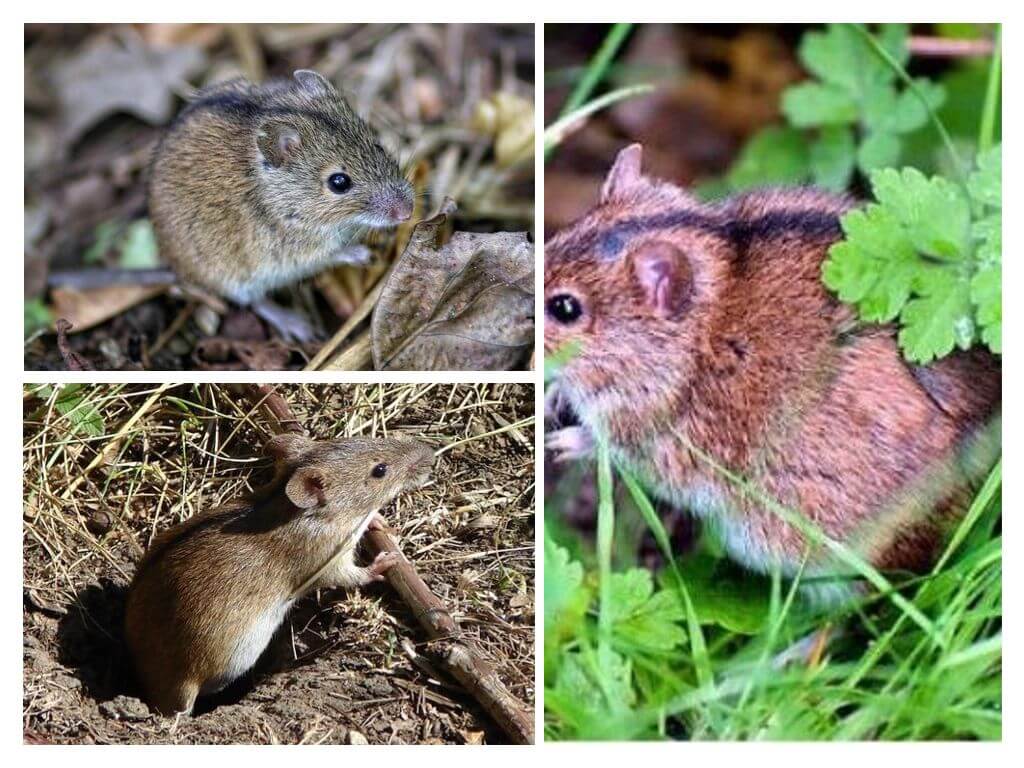

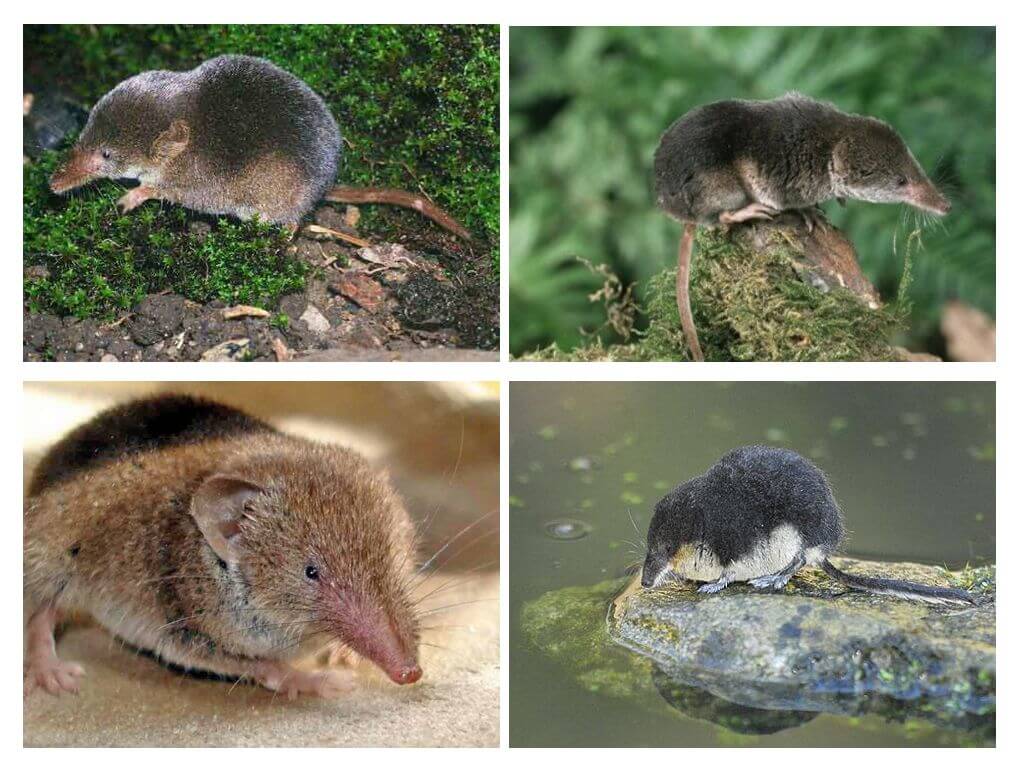
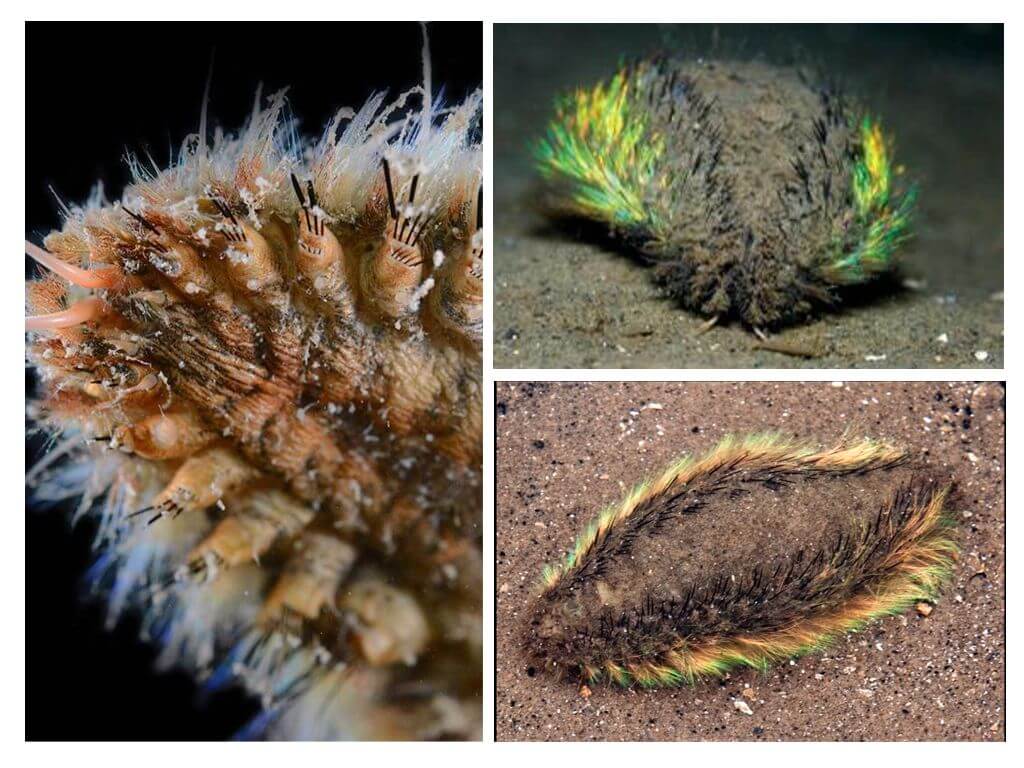
House mice are cute creatures, but you have to destroy them. They gnaw everything that comes in the way. The bags were destroyed in the pantry, turned into mounting foam into dust.
At one time, mice ran across the ceiling. We kept hay there for the cow, at night we could only hear the tramp, squeak, temple. They didn’t poison him, they set traps, but they weren’t particularly caught. In the spring, they themselves disappeared. Then a cat fell in love in the attic, since then there have been no settlers.
Mice in a private house in winter are common. As far as I can remember, they were not taken seriously. Just think, a mouse crawled out from under the floor. For the scoop and for her. Neither we nor all our acquaintances got infected with any terrible diseases from rodents. It may be distributed, but rarely. For this, certain associated conditions are needed.
They run around the garden, in the garden saw, but did not destroy. There was no particular damage from them. A little bit of beets were eaten, beans, but not deadly.
I have a cute, white mouse. Pleasant creature. I feed with grain, groats, loves cookies, crackers. It’s interesting to watch her. And here I am afraid of gray ordinary.
Everything is interesting with the genotype. Such a nondescript, at first glance, undeveloped creature at the genetic level is like a human being. But if not for them, there would be no loud discoveries. All drugs on mice are tested. They say that soon they will receive a cure for cancer, more effective than those that are at the moment.
I don’t like mice since childhood, but I don’t feel like pitfalls and traps. I always put a cat on them. Double benefit - it saves me from the presence of rodents, the well-fed one walks.
A house mouse is a harmful, small, gray creature that will stop at nothing. Wound up in the garage. Gnawed wiring, insulation, tools. It's a pity, not a pity, but he poured poison, and set traps.
The poison was never used, they did not infect anything from mice. In the pantry put the usual mousetraps. Cat caught rodents. They wandered around in the winter, and left in the spring themselves. There was no great harm from them.